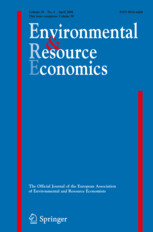-
Comments to Minnesota on the Social Cost of Carbon
The Minnesota Public Utility Commission (PUC) updated its social cost of carbon (SCC) values last week to a range of approximately $9 to $43, drawing from the 2015 Interagency Working Group (IWG) estimates. Minnesota’s use of the IWG SCC values recently came under scrutiny by industry groups in the state, who cited the recent energy executive order as reason to revisit the PUC externality estimates. After initial oral arguments, parties were invited to submit revised SCC values. Accordingly, we shared our recent comments to the U.S. Army Corps of Engineers, along with a cover letter explaining the importance of our analysis to the PUC.
-
Comments on Forest Service’s West Elk Mine Environmental Impact Statement
In its new Environmental Impact Statement (EIS) for the expansion of the West Elk coal mine in Colorado, the Forest Service fails to monetize climate damages. It claims that these methods are not appropriate at the project level, that the court ruling was issued prior to an executive order withdrawing federal guidance on these estimates and thus no longer applies, and that the EIS did not selectively exclude climate impacts because it also does not monetize other benefits or costs. We argue that these justifications are inadequate in our joint comments with the Environmental Defense Fund, the Natural Resources Defense Council, the Sierra Club, and the Union of Concerned Scientists.
-
Public Comments on Regulatory Review (HUD, MCSAC, FMC, NOAA, Coast Guard)
Many federal agencies are requesting the public’s suggestions for rules to repeal or reform, tacitly implying that most regulations stifle economic growth. In comments to several agencies, we argue that regulatory review should consider the public benefits of regulation, not just the costs to regulated industries, and should prioritize review of rules for which actual costs and benefits diverge significantly from predicted costs and benefits.
-
Comments to California’s Public Utilities Commission on Energy Planning
We recently submitted comments to California’s Public Utilities Commission, focused on the economic analysis used in its longer-term energy planning process across utilities. We ask the Commission to exercise caution in coordinating or consolidating this planning with other energy-related proceedings, as different proceedings have different goals and statutory requirements.
-
Comments to the Forest Service on Quantifying and Monetizing Greenhouse Gas Emissions
We recently submitted comments to the United States Forest Service on a Draft Environmental Impact Statement (EIS) that makes problematic claims about evaluating greenhouse gas emissions. In the Pine Mountain Late-Successional Reserve Habitat Protection and Enhancement Project Draft EIS, the Forest Service gives three main reasons for not quantifying—or monetizing the effects of—greenhouse gas emissions from the proposed action. First, the Service claims that “project level emissions alone are not sufficient to cause climate change.” Second, the Service claims that the “large majority of Forest Service projects” are too “small” for it to be “presently possible to conduct quantitative analysis of actual climate change effects.” Finally, the Service questions whether “such disclosure would provide a practical or meaningful effects analysis for project decisions.” We explain why each of these reasons is wrong according to economic principles, the requirements of the National Environmental Policy Act, and the Service’s own guidance regarding climate change.
-

Few and Not So Far Between
A Meta-analysis of Climate Damage Estimates
Given the vast uncertainty surrounding climate impacts, meta-analyses of global climate damage estimates are a key tool for determining the relationship between temperature and climate damages. Due to limited data availability, previous meta-analyses of global climate damages potentially suffered from multiple sources of coefficient and standard error bias. To address and test for these biases, we expand on previous datasets to obtain sufficient degrees of freedom to make the necessary model adjustments, including dropping duplicate estimates and including methodological variables. Estimating the relationship between temperature and climate damages using weighted least squares with cluster-robust standard errors, we find strong evidence that duplicate and omitted variable biases flatten the relationship. However, the magnitude of the bias greatly depends on the treatment of speculative high-temperature (>4 ◦C) damage estimates. Replacing the DICE-2013R damage function with our preferred estimate of the temperature–damage relationship, we find a three- to four-fold increase in the 2015 SCC relative to DICE, depending on the treatment of productivity. When catastrophic impacts are also factored in, the SCC increases by four- to five-fold.
-
Comments on California Electricity Policy Order Instituting Rulemaking to Create a Consistent Regulatory Framework for the Guidance, Planning, and Evaluation of Integrated Distributed Energy Resources
California’s state government is moving forward on electricity and climate policy, likely setting a blueprint for future state and federal action. We submitted comments to the California Public Utilities Commission (CPUC) on factual disputes flagged by stakeholders, related to how utilities will use cost-benefit analysis in decisionmaking. We encouraged staff at CPUC to use the Social Cost of Carbon for its interim greenhouse gas adder, use a 3% discount rate for future damages, include other environmental externalities like air pollution in its analysis, and continue considering societal costs to ensure that the benefits justify the costs of a proposed policy.
-
Comments to EPA on Evaluating Existing Regulations
We recently submitted comments to the Environmental Protection Agency (“EPA”) regarding its obligation to evaluate existing regulations and identify some for repeal, replacement, or modification under Executive Order 13,777. Our comments are meant to ensure that EPA stays focused on its objective to identify outdated, unnecessary, ineffective, or net-costly regulations for repeal, replacement, or modification and does not prioritize recently promulgated and overwhelmingly cost-benefit justified rules, some of which have been targeted by industry commenters.
-
Comments to the Office of Natural Resources Revenue on the Reform Rule
We recently submitted two sets of comments to the Office of Natural Resources Revenue (ONRR), making the case against repealing an Obama-era reform that promised to recover millions of dollars in royalties from mining companies—a reform that would have ensured that taxpayers receive fair market value for the use of public lands. Our first set of comments objects to the proposed repeal of the Consolidated Federal Oil & Gas and Federal & Indian Coal Valuation Reform Rule (the “Reform Rule”), while our second set responds to ONRR’s request for comments on whether revisions are necessary to the regulations governing coal, oil, and gas royalties. We previously submitted comments to ONRR on the proposed Reform Rule.
-
Comments on U.S. Army Corps of Engineers Environmental Impact Statement
President Trump’s recent executive order on energy disbands the Interagency Working Group on the Social Cost of Carbon (IWG) and withdraws its technical support documents that underpin the IWG’s range of estimates. Instead, the executive order directs federal agencies to continue to monetize the social cost of carbon emissions pursuant to the Office of Management and Budget’s Circular A-4. In our comments, we highlight that the range of estimates from the IWG that agencies have been using, including the number used by the U.S. Army Corps of Engineers in the Draft Environmental Impact Statement, is consistent with Circular A-4 and therefore, consistent with the executive order.
Viewing recent projects in Climate and Energy Policy


